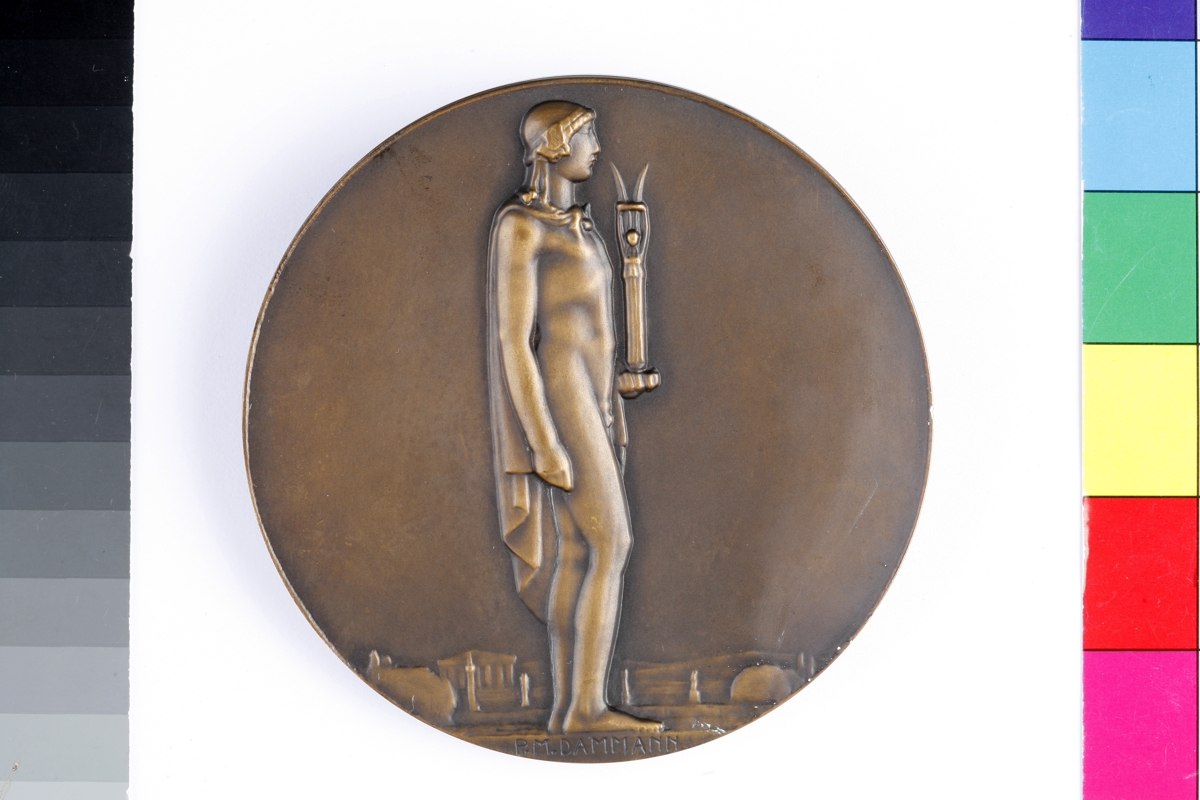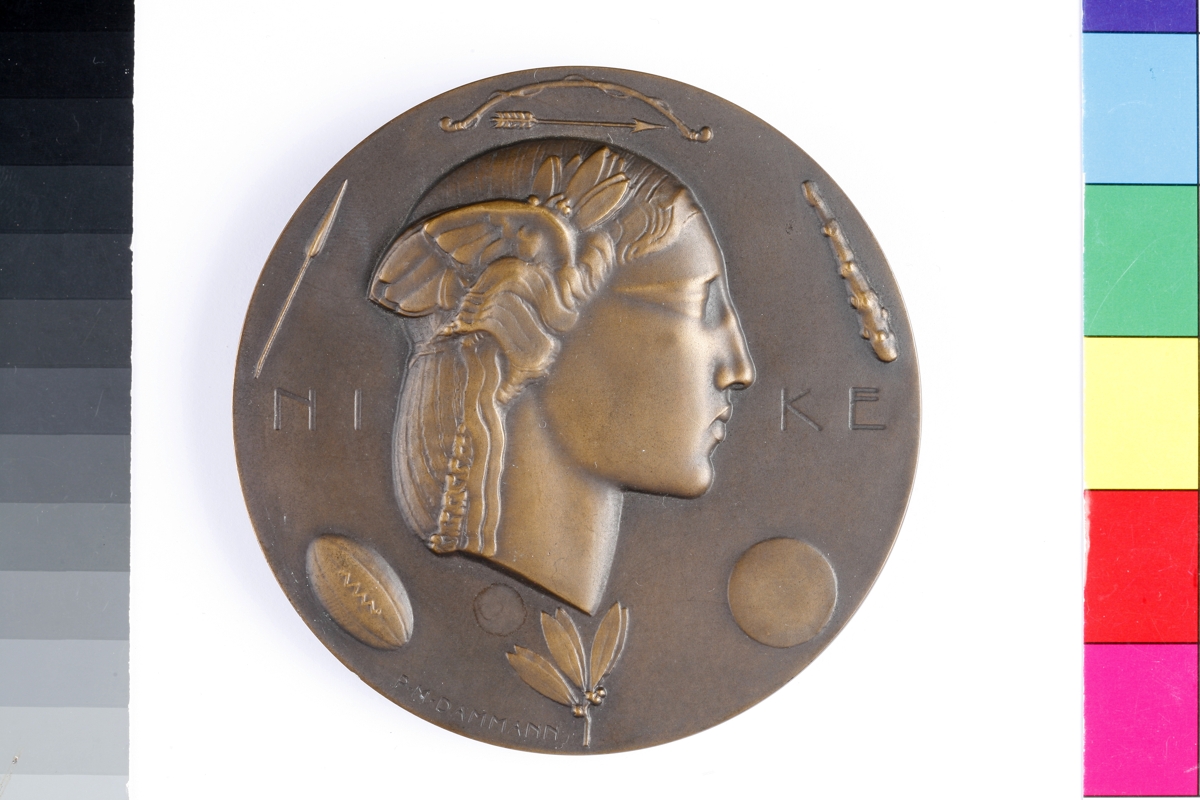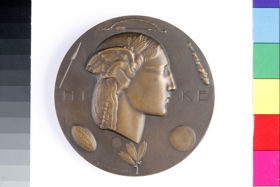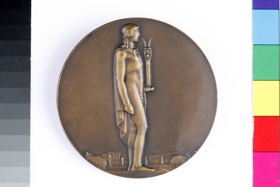We do not know exactly in what context Pierre de Coubertin received this medal. The obverse depicts a head of Nike surrounded by sporting accessories, while the reverse depicts a naked athlete standing on the right, a cape hanging from his neck, holding a statuette of Victory and contemplating the distant landscape of Olympia. It seems that the medal was adapted for the 1924 Olympic Games in Paris with the addition of a rugby ball, a javelin, a bow and arrow, a club and a discus, but other designs were ultimately preferred to this project. The coin was produced by Arthus-Bertrand in a limited edition of 20 copies.
Stylistically, this medal is similar to the medals he created at the time of the Grand Prix de Rome, which he received in 1908. At that time, his designs were considered ‘modern’, which we now associate with Art Deco. Damman's philosophy was that ‘medals should be clear and their message instantly understood’.



